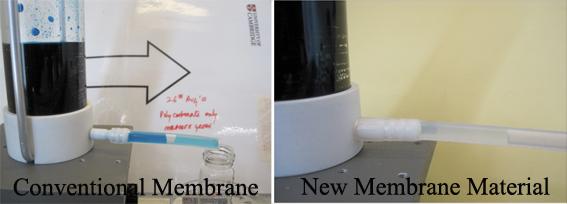Contact: Dr. Easan Sivaniah, Physics
Mentor: Dr. Julian White, Skalene
Dr. Sivaniah’s team in the Cavendish have been working on developing new porous structures. Porous materials are widely used in many applications, from filters to catalysis to fuel cells to solar cells to many others. In most cases the reason for using a porous material is to create a very large and accessible surface area, which means that the material needs to have lots of holes and for these to be accessible from outside.
Dr. Sivaniah’s team have succeeded in developing a new method of creating nanostructured materials and being able to control the size of the pores. The important aspect is use of rapid techniques which are easily transferable to an industrial manufacturing environment.
The resulting polymer structures can be used as they are, for example as thin film filter membranes. Filter membranes are used in a very broad range of applications, from dialysis to water purification, and the new material has already been shown to be significantly more effective at removing certain contaminants better than other commercially-available membranes (see figure below).

Alternatively the polymer structure can be used as a mould to create other materials in a porous form. For example, creating porous titanium oxide films which can be used as a photocatalyst for self-cleaning surfaces, for splitting water, and for many other industrial processes.
The task for the i-Team is to look at the potential uses of the new materials and to identify the areas where it adds most value, or even enables processes which are impossible today. The team will need to recommend the next steps and best applications for the researchers to focus on.
